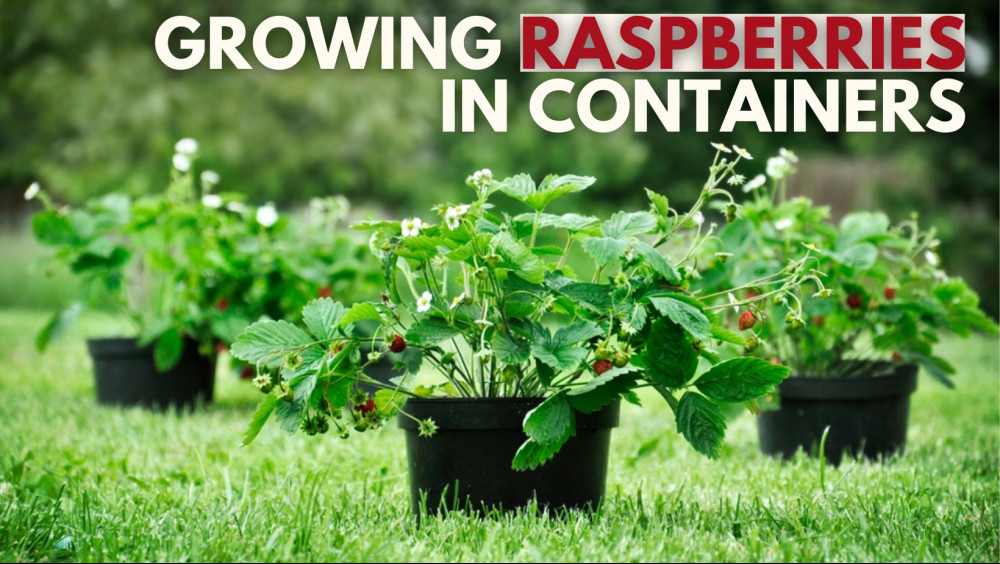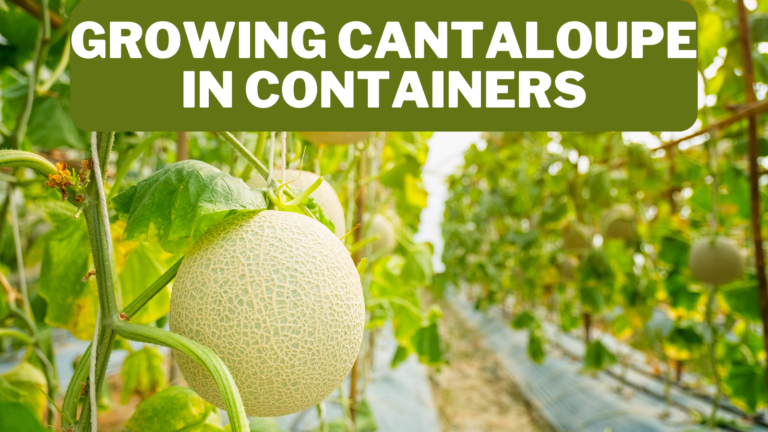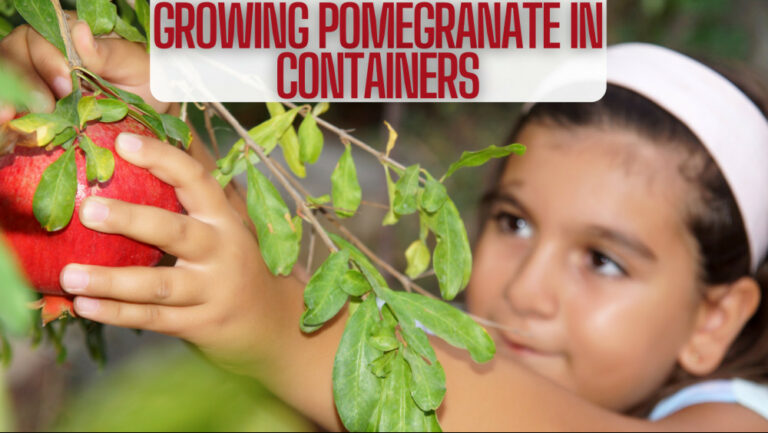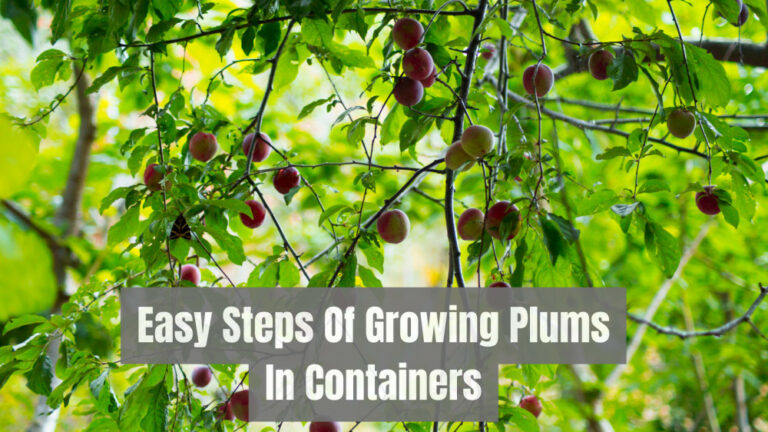9 Easy Steps Of Growing Raspberries In Containers
9 Easy Steps Of Growing Raspberries In Containers
Do you wish to cultivate raspberries but don't have a permanent location? Maybe your planting spot doesn't get enough sunlight? If your apartment has no yard or garden, does it have a sunny balcony or deck?
Raspberry plants in containers are simple to grow, and if you choose the appropriate types, you can get delicious raspberries multiple times during the season!
It's the ideal time for growing raspberries in containers! I'll show you how to get started with the right techniques.
Best Raspberry Varieties
Before growing raspberries in containers, you must know about all varieties to find the best for your climate.
1. Boyne Raspberry
The variety is perfect for Zones 3-8. This type is known for its outstanding flavour and produces brilliant red fruit with a sweet flavour that grows well in most sections of the United States.
This summer-bearing cultivar is cold, hardy, and disease-resistant, yielding one crop in early July. At maturity, canes will reach three to four feet tall with an equal spread, and the foliage will turn orange and scarlet in the fall.
Although ‘Boyne' prefers full sun, it can also be planted in partial shade. Water it well, and expect fruit on one-year-old canes, which you should trim back to the ground once they've finished producing.
2. Killarney Raspberry
The variety is perfect for Zones 4-7. Since its debut in Canada in 1961, ‘Killarney' has been a popular cultivar due to its great cold tolerance.
This summer-bearing cultivar yields medium-sized, medium-to-dark red fruit with a sweet, delectable flavour.
The berries will be ready to pick in July of the year after planting, about a week after the fruit on the ‘Boyne' vines has ripened. Canes that are upright and strong grow at a moderate rate and generate medium yields.
In addition, although most raspberries produce white blossoms in the spring, this one has pink blooms.
It is resistant to the Raspberry Bushy Dwarf Virus, like many other disease-resistant cultivars (RBDV).
‘Killarney,' somewhat resistant to root rot and self-pollinating, should be grown in full sun in well-draining soil.
3. Shortcake Raspberry
The variety is perfect for Zones 5-8. It thrives in containers. This miniature raspberry is ideal for gardeners with little space.
Plant it in full sun with a mounding habit, a mature height of two to three feet, and an equal spread.
Its compact design eliminates the need for a trellis, and it is self-pollinating, so even if you only have space on your patio or balcony to cultivate one, you should be able to have a prolific plant. It's also thorn-free!
‘Raspberry Shortcake' needs to be pruned and cared for regularly, and it may be more vulnerable to disease than other types. Maintain a constant moisture level in the soil and do not let it dry out between watering.
4. Cascade Delight Raspberry
The variety is perfect for Zones 6-9. ‘Cascade Delight,' a newer cultivar developed by Washington State University in 2003, produces huge, bright red fruit with good flavour available to harvest in July.
This type is not cold-hardy and grows quickly with medium to high yields. It is, however, Phytophthora root rot resistant. On two-year-old canes, rootstock will produce fruit the year after planting.
5. Royalty Raspberry
The variety is perfect for Zones 4-7. This robust and disease-resistant variety is known as a “purple raspberry,” with exceptionally large fruit and great flavour.
It's a hybrid of black and red kinds. On established vines, this aggressive growth will deliver one enormous crop in mid-July.
At maturity, ‘Royalty' will grow three to four feet tall with an equal spread. It can even thrive at high elevations with minimal winter protection and continuous summer watering.
6. Anne Raspberry
The variety is perfect for Zones 4-9. This everbearing variety produces enormous golden-hued fruit with delicious, almost tropical flavour and a tinge of apricot in the berries.
The Utah State University Cooperative Extension awarded ‘Anne' for having the finest flavour compared to raspberry cultivars in 2013. It's a disease-resistant variety that produces a lot of fruit.
Harvests can be expected from July through the first frost because they are self-pollinating, with better flavour as the weather cools. This type of propagation is prohibited, as is the case with all patentable modifications.
Plant in a sunny location with well-draining soil. It is both cold and heat-resistant. It's crucial to remember that this cultivar is susceptible to root rot.
7. Dorman Red Raspberry
The variety is perfect for Zones 5-9. Second-year canes expect high yields from June through the first frost in September due to an everbearing cultivar that abundant sweet, red fruit on fast-growing, thorn-less canes. Trellising is necessary to prevent them from drooping to the ground.
Other cultivars may struggle in the heat and humidity of southern regions, but this self-pollinating variety thrives. ‘Dorman Red' should be grown in full sun with well-draining soil.
8. Fall-Gold Raspberry
The variety is perfect for Zones 4-9. This moderately vigorous cultivar produces two harvests per season on biennial canes and is an everbearing variety with sweet and tart golden fruit.
This raspberry is more compact than other species, with erect, thorn-covered canes that reach a height of 24 to 36 inches at maturity and grow well in most of the US if given full sun.
Yellow raspberries, essentially a red raspberry type with a mutation that prevents the creation of the brilliant colour that makes these berries famous, require similar care as red raspberries.
The first crop will be harvested on the top third of the canes in the fall, with the second crop being harvested in the spring on the lower two-thirds of the same canes.
The fall crop will be produced on the top third of canes, with the second crop developing on the bottom two-thirds of the same canes the following spring.
Prune ‘Fall Gold' and other everbearing types carefully because the fall crop will be produced on the top third of canes, with the second crop developing on the bottom two-thirds of the same canes the following spring.
This cultivar is known for its capacity to tolerate temperatures as low as -25°F, making it an extremely hardy plant.
9. Heritage Raspberry
The variety is perfect for Zones 4-8. This everbearing variety produces a harvest in mid-July and another in early September, with medium-sized, bright red fruit with a moderate flavour.
You can expect fruit in the first year of growth because it is disease-resistant and highly productive (and these grow fast).
Canes mature to be three to four feet tall with an equal spread. Fall foliage in yellow and orange adds interest to the garden.
The American Society of Horticultural Sciences awarded this variety the Outstanding Fruit Cultivar Award in 2004.
‘Heritage' grows best in full sun, although it will also bear fruit in partial shade and may be cultivated at high altitudes.
During the winter, provide some protection and water thoroughly during the growing season. You should expect lesser yields and a shorter harvest season in chilly climates.
10. Jewel Raspberry
The variety is perfect for Zones 3-8. Do you enjoy black raspberries? This summer, bearing ‘Bristol' x ‘Dundee' cross yields red fruit that darkens to black when mature, from late June to early July, and is also called ‘Jewel Black.'
The berries range from medium to large, are sweet and tasty, and have few seeds, making them perfect for canning.
If planted in well-draining soil in full sun, this self-pollinating and cold-tolerant plant grows swiftly, with 24- to 36-inch canes at maturity. However, Jewel has lower yields, plants more for cross-pollination, and has greater yields.
Don't let these plants dry out in the summer; try to keep moisture levels steady. Pruning raspberry plants is critical. Remember to cut back dead wood and all two-year-old canes to the ground in the spring, but leave the previous year's growth standing.
According to experts, black raspberries should not be planted within 75 feet of other colour cultivars because they may be more susceptible to diseases spread by aphids.
11. Joan J Raspberry
The variety is perfect for Zones 4-8. This thornless, everbearing cultivar provides tiny to medium tasty, firm, dark red fruit for medium-sized harvests in July, August, and mid-September.
This strong growth, with a mature height of four to five feet and a spread of two feet, should be planted in full sun. Also, because ‘Joan J' is vulnerable to root rot, plant it in well-draining soil.
You'll get even bigger harvests if you grow it with another cultivar, such as ‘Polka.' It's self-pollinating and very hardy.
12. Polka Raspberry
The variety is perfect for Zones 4-8. ‘Polka' is a hardy cultivar with few thorns that mature to four to six feet tall with a one to two-foot spread and copious yields.
The berries are luscious and delicious when ready to pick, with a mild flavour and a pale to dark red colour.
These everbearing plants will yield fruit from July to the first frost in September, and they're recognized for maturing first compared to other types at the start of the season.
Growing numerous plants isn't necessary because they are self-pollinating and cold-hardy, but it will help secure larger harvests. Another advantage is that it is resistant to root rot. Use the ‘Joan J' cultivar as a companion plant.
Growing Raspberries In Containers
1. Choose The Right Container To Grow Raspberries
Growing raspberries in large, deep pots ensures that your plants have adequate room for new development and any stakes or trellises that may be required for support.
One cane can be planted in a sixteen-inch pot; if you're planting numerous canes, half-barrels or five-gallon buckets are good options.
Growing in bags is another alternative, although they might not be as solid as a plastic or wooden planter.
To allow excess water to drain, containers must include drainage holes or be made of nonwoven material. Raspberries despise having their roots wet.
Summer-bearing cultivars require extra support since their canes are higher and more prone to bending when loaded with fruit in the summer.
There are a variety of ways to support your canes. Tomato cages work nicely, depending on the design of your container.
Press tall garden stakes into the perimeter of each container and tie twine around them at various heights for support. This is a simpler, more cost-effective solution.
2. Soil Requirements For Raspberries
The capacity to adjust soil type and nutrients is one of the key advantages of container gardening.
Raspberries in pots demand slightly acidic (pH 6.0-6.2) soil that retains nutrients and drains effectively. On the other hand, blueberries require acidic soil with a pH of 4.5-5.5.
Any excellent, bagged potting soil will suffice for these containers, though acidifying ingredients such as compost, aged manure, or peat moss should be added to the potting soil.
Compost and manure are other good sources of nutrients, while peat moss helps to keep moisture in the soil. A balanced NPK completes nutritional requirements.
3. Time To Plant Raspberries
Planting raspberries in pots follows the same schedule as planting raspberries in the ground. November through early March is the greatest time.
This is because bare-rooted raspberry canes (which are by far the cheapest) become available in the winter. Throughout the year, raspberries are sold and are ready to grow in containers.
4. Planting The Raspberry Fruit Tree
Raspberries are available as bare-root plants or as live potted plants. You may feel compelled to stuff more than one cane into a small container since bare-root canes appear scraggly and uninteresting.
Stick to one cane per sixteen-inch container and numerous canes per 5-gallon container or greater for plant health and explosive berry production.
Make a hole large enough for your bare-root plant to nestle comfortably without crowding its roots once you've assembled the adjusted potting soil mixture in your container.
The soil should cover the plant about 1 to 3 inches above the roots. Water well after gently pressing the soil around the roots. If the soil settles low after watering, add more soil.
The procedure for transplanting a live potted plant is virtually the same, except the plant should be planted at the same depth as in the pot.
Add stakes or trellises after transplanting bare-root or live potted plants so you don't injure the roots by adding them later.
Straw, wood chips, or other organic materials can mulch the soil surface. Mulching keeps weeds at bay and, more critically for raspberries, keeps moisture in the soil.
5. Watering Raspberries Plants
Maintaining the plants well-watered is critical while avoiding making the soil soggy. If you want the tastiest fruits, You will need to water the container more frequently if it is on a sunny balcony or patio.
Checking the topsoil every two days to determine if it's dry or moist is the best way to use it. When the dirt dries, water the plant until it seeps out of the bottom hole.
6. Location To Plant Raspberry Plants
According to Davis, potted raspberry plants require full sun for at least 8 hours daily. Burnett recommends leaving your plant in the shadow for the first 10 days to allow it to ‘establish a foothold.' “You can transfer it into a full sun spot once it appears to be catching.
7. Fertilizer Of Growing Raspberries In Containers
When preparing your soil for planting, use a balanced fertilizer to give your plants a nutritious boost.
A powdered organic 10-10-10 fertilizer, when mixed with compost at planting time, will help your plants last 3-4 months.
For continued support, you can use a liquid kelp fertilizer foliar spray once or twice a month while the plants grow.
Fertilize your container raspberries twice with the 10-10-10 fertilizer in the spring after your first growing season, once in March and once in May.
Add compost to the container throughout the season and cover the soil surface to keep weeds and dampness at bay.
8. Pruning Raspberries Growing In Containers
Certain raspberry types can quickly grow to 5-6 feet tall in a container, and you may need to trim them properly to keep them under control.
Pruning should be done in late winter, around February. In the mid-season, cut back any damaged canes to restore their normal shape and height. After harvest, trim the plant to prepare it for the winter.
Cutting off the parts of the canes that produced fruit the previous year is critical. This will encourage the plant to produce new fruit-bearing canes the following season. However, this step is optional; you can skip it.
9. Harvesting Raspberries
When harvesting raspberries in the home garden, wait until the berries are fully ripe. Unlike industrial production, the purpose is to extend the harvesting season by selecting the appropriate types.
Raspberries are gathered every second or third day from the same plant, and with enough plants and kinds, the raspberry season can run for months.
Raspberries can be harvested daily and eaten fresh, processed into jellies and juices, or used in pies and cakes, or stored for later use.
10. Pests & Diseases Of Raspberries
While there are only a few issues to be aware of, they can quickly escalate into severe issues. Continue reading to learn how to effectively prevent these issues from occurring in the first place.
1. Aphids
Aphids puncture plant cells and feed on the juices inside. You may have an aphid infestation if your plants' leaves are curled, yellow, or deformed.
Look for tiny insects on the undersides of leaves and plant stems. These pests can be controlled using a neem oil spray.
2. Raspberry Beetle / Fruit Worm Damage
The damage caused by the raspberry beetle/fruit worm is simple to spot. Adults of the small red-brown beetle skeletonize young leaves and canes.
Fruit worms are the larvae of these insects that dig through fruit tops, and the worms themselves are visible. It is possible to handpick the microscopic worms, but a Bacillus thurigiensis spray may be more successful.
Bacillus thurigiensis is safe for bees and other beneficial insects and is approved for use in organic gardens.
3. Cane Borers
Beetles that devour the tops of new plant canes are known as cane borers. Take a closer look if the tips of your canes appear wilted.
The beetles have a copper-red neck and are slender, measuring 14 inches long. Their larvae are whitish and resemble grubs.
To treat, prune the canes at least 6 inches below the point where the wilting begins, removing any larvae that may be hiding.
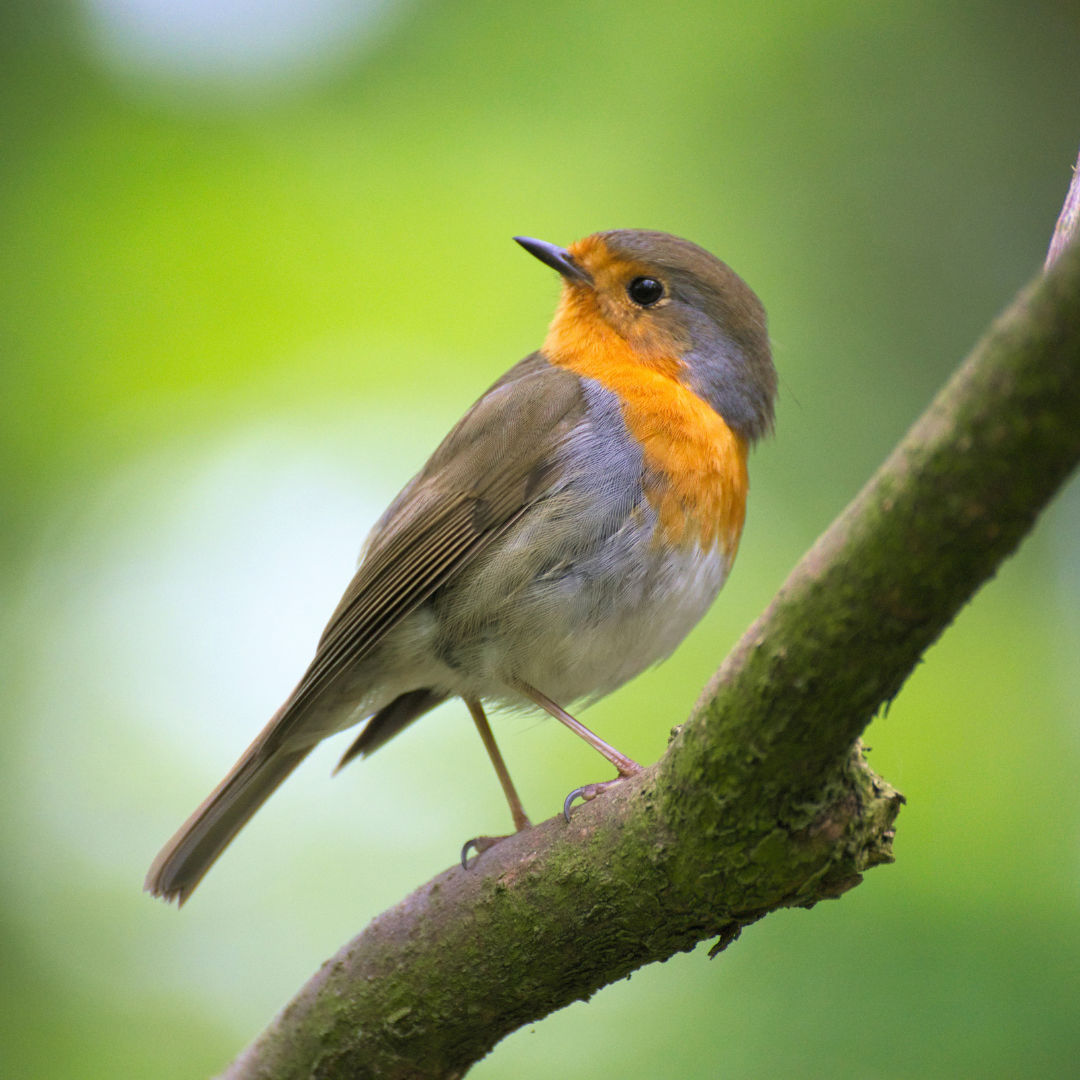
4. Birds
Birds enjoy raspberries just as much as you do. Cover your plants with protective netting if your neighbourhood birds are interested in your delicious berries.
5. Fungal Blights
Fungal blights such as anthracnose, spur blight, and cane blight cause canes to develop pits, patches, and sores, finally leading to plant death.
Fungi thrive in damp environments and spread by spilling water from one plant to another. Fungi are tough to eradicate and can live for up to two years.
Canes that are infected should be trimmed and destroyed (not composted). The best action is to prune only in dry weather, keep plants healthy by watering and fertilizing them properly, and buy disease-resistant kinds.
6. Botrytis Fruit Rot
During prolonged rainy, overcast, warm weather, botrytis fruit rot (gray mould fungus) affects brambles and other berries.
During plucking, the fuzzy, gray powder coats the blossoms and fruit and spreads to surrounding fruits.
Fruit rot caused by Botrytis can be avoided. Good drainage, plenty of airflow between leaves and plants, and full sun are all requirements for your pots. If you notice gray mould on your berries, carefully remove and discard them.
7. Raspberry Leaf Curl Virus
Aphids spread the virus, which is an incurable disease. Disease symptoms include discoloured, curled leaves, brittle canes, and crumbly fruits.
The illness is treated by removing the diseased plants. Please make sure the plants you buy are virus-free before you buy them.
Cleaning your pruning shears and other garden tools is vital to avoid transmitting the disease to healthy plants.
Conclusion
Raspberries are a simple plant to grow and provide a tasty reward for your efforts. If you have any queries, feel free to comment here.
I trust you enjoyed this article on the 10 Easy Steps Of Growing Raspberries In Containers. Please stay tuned for more blog posts to come shortly. Take care!
JeannetteZ
>>>Please click here to read my all-inclusive article about Container Gardening<<<
>>>Are you interested in homegrown herbs and medicine? Please click here to find out more about it!<<<
Your Opinion Is Important To Me
Thoughts? Ideas? Questions? I would love to hear from you. Please leave me your questions, experience, and remarks about this article on the 10 Easy Steps Of Growing Raspberries In Containers in the comments section below. You can also reach me by email at Jeannette@Close-To-Nature.org.
Disclosure
This post may contain affiliate links. I earn from qualifying purchases as an Amazon Associate and other affiliate programs. Read my full affiliate disclosure.
You might also enjoy these blog posts:
Natural Remedies For Everyday Illnesses
Pet Birds That Live A Long Time
Best Gardening Tips For Beginners
Solar Energy vs Nuclear Energy
8 Steps Of Growing Blackcurrants In Containers

